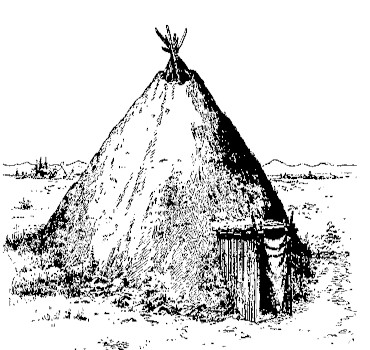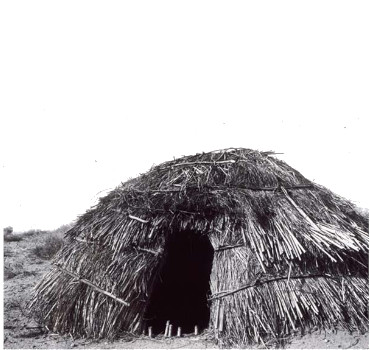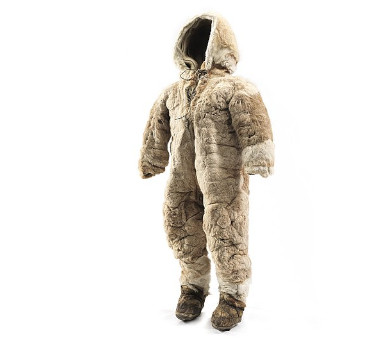THE HISTORY OF THERMAL INSULATION: NAVIGATING HISTORICAL PATH THROUGH WIKIPEDIA PDF ESSAYS
 The history of thermal insulation is not so long compared with other materials, but human beings have been aware of the importance of insulation for a long time.
The history of thermal insulation is not so long compared with other materials, but human beings have been aware of the importance of insulation for a long time.
In ancient times, people were focused on different priorities compared to us – their main concern was acquiring food to survive. However, like us, they also experienced cold and warmth. During winter, they used almost anything to shield their bodies from low temperatures. Their choices were often random and depended on the region. In mountainous areas, it was likely sheep skins, while in forests, it might have been wolf or bear skins. There is plenty of information available about what people used to endure cold temperatures, and today, we can easily access it through the internet, particularly via Wikipedia, where we can find the most reliable sources.
WHAT DID ANCIENT PEOPLE USE FOR INSULATION?
In the prehistoric time, human beings began their activity of making shelters against wild animals and heavy weather, human beings started their exploration of thermal insulation. Prehistoric peoples built their dwellings by using the materials of animal skins, fur and plant materials like reed and flax. These materials were first used as clothing materials, first human body insulation because of their dwellings were temporary, they were more likely to use the materials they used in clothing, which were easy to obtain and process.
Later, human beings' long life span and development of agriculture determined that they needed a fixed place of residence, earth-sheltered houses (structure with earth (soil) against the walls, on the roof, or that is entirely buried underground), stone houses (first bungalow constructed in Ooty (India)), and cave dwellings began to emerge.

 Both earth-sheltered houses and cave dwellings were built at the same time and it appears they were very popular because of their inherent benefits.
Both earth-sheltered houses and cave dwellings were built at the same time and it appears they were very popular because of their inherent benefits.
Their implementation was cheap and an earth covering assured excellent protection against wild animals, fire and during periods of fighting. In addition earth houses use soil as a magnificent insulating blanket, as due to the high density of earth, the inside temperature changes very slowly.
This phenomenon is called thermal lag which is why earth covering keeps the interior warm in winter and cool in summer.
WHAT WAS THE FIRST INSULATION MATERIAL?
Organic materials were the first available to build a shelter for people to protect themselves from bad weather conditions and to help keep them warm. But organic materials like animal and plant fibre cannot exist for a long time, so these natural materials cannot satisfy people's long-term need for thermal insulation. So, people began to search for substitutes which are more durable. In the 19th century, people were no longer satisfied with using natural materials for thermal insulation, they processed the organic materials and produced the first insulated panels. At the same time, more and more artificial materials start to emerge, and a large range of artificial thermal insulation materials were developed, e.g. rock wool, fibreglass, foam glass.
Reed panels were first used in the 19th century as thermal insulation mainly in ancillary buildings. They were popular because they were impervious to decay but they had poor hygroscopic ability. At the beginning of the 20th century reed panels appeared with bituminous coatings but they did not spread because of their flammability and unreliable quality .
WHAT TYPE OF INSULATION WAS USED IN THE 1920s?
In 1920 the American Celotex Company introduced insulating panels made of bagasse (a waste by product of sugar manufacturing). It was used as thermal insulation in home construction and in the manufacture of refrigerated railroad cars. Owing to their flammability, later one or both of the sides were coated with asbestos cement. The first attempts to produce flax panels for roof insulation were made in the USA.
Polystyrene foam was first made in 1931 in the USA. The Swedish inventor Carl Georg Munters (1897-1989) cooperating with John Tandberg (1896-1968) patented the method for foaming polystyrene.
Applying their technology the first polystyrene foam was produced in 1941 by Otis Ray McIntire (1918-1996), an engineer of the Dow Chemical Company. He heated the milk-white polystyrene granulate up to 200˚C in an extruder using a chlorinated hydrocarbon (chloromethane) as a foaming agent. He led the polystyrene foam through a narrow aperture which resulted in extruded polystyrene (XPS) panels with a 98% closed cellular structure. The first polystyrene insulating product was put on the market by the company in 1943 under the name of Styrofoam R.
The appearance of plastic foams (polystyrene, polyurethane) created a huge revolution in the market of insulation materials in the 1940s and 1950s. From this point on artificial insulation materials (plastic foams, mineral wool) overtook to force back the natural materials. After the oil crisis of the 1970s their spread accelerated and today artificial materials represent about 90-95% of the total thermal insulation material production.
Another technology – the expanded polystyrene foam (EPS) was invented in Germany by the engineers of IG Farbenindustrie AG in 1950. Using pentane as a foaming agent the polystyrene granulate is supplied with water vapour. As the temperature rises the grains of the raw material grow soft and the effects of the pentane results in a 20-50-fold increase in the volume of the pearls. During this action small closed cells arise inside, as a result of which, the expanded polystyrene foam has excellent thermal insulating capacity creating an ideal building insulation material.
Summarising the development of thermal insulation materials we can separate five different periods of time. Each period started with a significant step in the historical development of humanity, science or industry. These were the main causes of change in the market of thermal insulation materials that resulted in the appearance of a new or disappearance of an old product. If we analyse the market for thermal insulation materials it is clear that the most popular products are the artificial materials. Mineral wool products represent about 50-55% and plastic foams about 40-45% of the total production. It became clear in the last century that the amount of fossil fuels is finite and they will be exhausted within a relatively short time. In addition the serious issue of the 21st century, that of climate change and global warming results largely from the emissions of greenhouse gases (especially CO2)from the use of fossil fuels.
WHEN WAS INSULATION FIRST INTRODUCED IN THE UK?
In 1965, the UK government introduced its initial guidelines regarding home insulation, marking the first regulatory steps in this area. These standards, albeit modest compared to modern ones, mandated a mere 28mm of insulation for loft spaces. Over time, these requirements have evolved and expanded with each subsequent revision of the regulations.
During the 1970s, cavity wall insulation made its debut, eventually becoming a mandatory requirement for all new buildings in the UK by the 1990s. While any property constructed in London after 1983 should already incorporate cavity wall insulation, older homes may lack this feature.
Related Searches:
HOW ARTIFICIAL INTELLIGENCE IS TRANSFORMING THE INSULATION GAME
THE PRICE OF COMFORT: UNRAVELLING WHY INSULATION IS SO EXPENSIVE
STRAW BALE AS A DIY INSULATION PROJECT?
THE BIGGER THE R, THE SMOOTHER THE RIDE!
WHAT IS THE NEWEST FUTURE INSULATION?
DOUBLE INSULATION LAYERS: INSTALLATION TIPS
WHAT TO CONSIDER WHEN CHOOSING INSULATION MATERIALS
FOIL INSULATION: TO GAP OR NOT TO GAP? THAT IS THE QUESTION!
*Insulationgo LTD strives to keep the content accurate and up-to-date, but we cannot be held responsible for any mistakes or exclusions.
The information in this article isn't expert advice and shouldn't replace talking to the right specialists. Before buying or deciding anything based on this info, it's best to contact the product manufacturer directly to double-check if it's right for what you need.
Descriptions, drawings, photographs, data, proportions, weights, and measured values provided here may change without prior notice and do not establish the guaranteed contractual quality of the products. The recipient of these products holds the responsibility to comply with proprietary rights, existing laws, and legislation.
Using this articles implies acknowledgment and agreement that Insulationgo LTD cannot be held accountable for any damages, losses, or inconveniences resulting from the use or reliance upon the information provided. This limitation of liability extends to all users of the article, including visitors, readers, and subscribers.










































































































